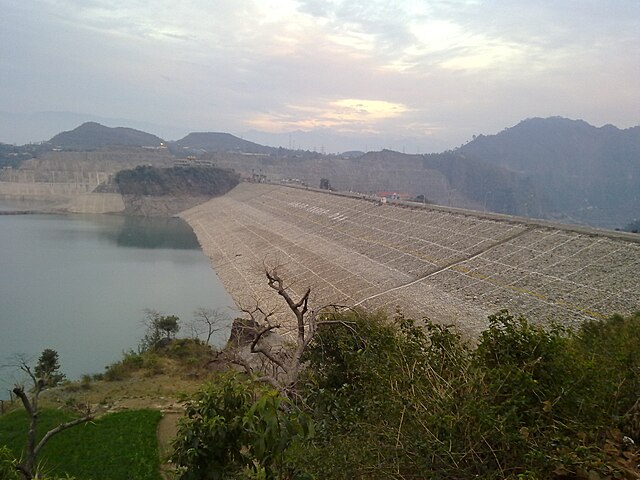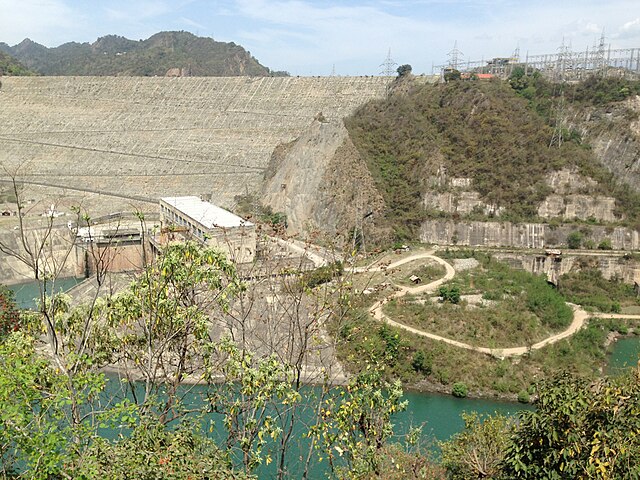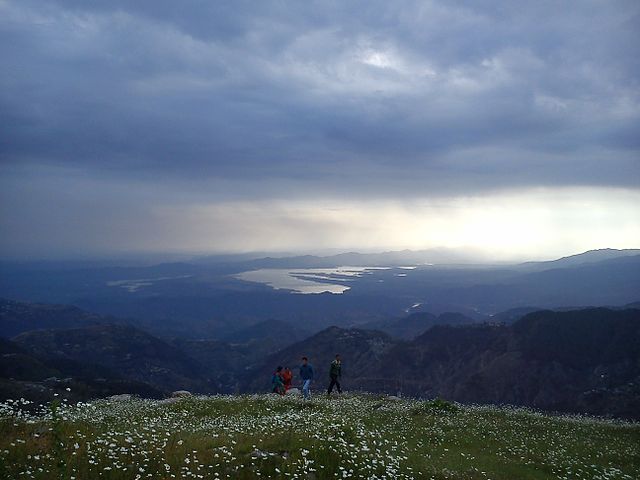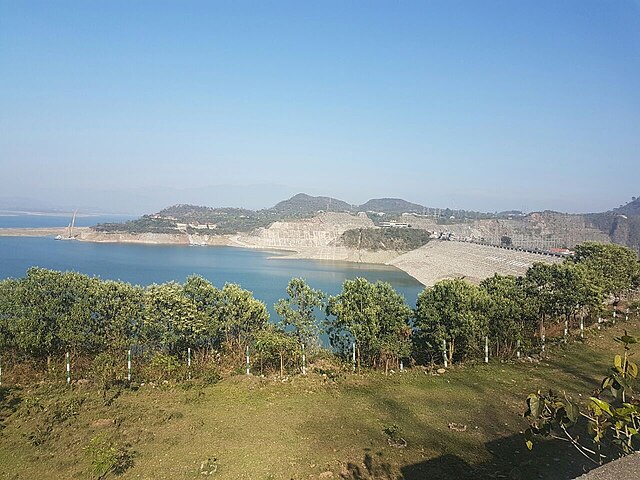Ever wondered how a single structure can transform an entire region’s destiny? The Ranjit Sagar Dam stands as a testament to human ingenuity and engineering excellence, dramatically reshaping the landscape of Punjab and Jammu & Kashmir. This massive concrete gravity dam, also known as the Thein Dam, represents one of India’s most significant multipurpose river valley projects.
Located on the majestic River Ravi, this engineering marvel doesn’t just hold water—it holds the promise of progress, prosperity, and sustainable development for millions of people. But what makes this dam so special? Why has it become a cornerstone of regional development? Let’s dive deep into the fascinating world of Ranjit Sagar Dam and discover how it’s changing lives across northern India.
Historical Background and Construction Timeline
The Vision Behind the Project
The story of Ranjit Sagar Dam begins in the late 20th century when India was grappling with growing energy demands and the need for better water management. The project was conceived as part of the larger Ravi-Beas river system development, aimed at harnessing the untapped potential of these mighty Himalayan rivers.
The dam’s foundation stone was laid with great fanfare, marking the beginning of what would become one of the most ambitious engineering projects in the region. The vision was clear: create a multipurpose facility that could generate clean energy, provide irrigation water, and offer flood protection to downstream areas.
Construction Challenges and Milestones
Building Ranjit Sagar Dam wasn’t a walk in the park. The construction teams faced numerous challenges that would test their resolve and expertise. The rugged terrain, unpredictable weather conditions, and the sheer scale of the project demanded innovative solutions and unwavering determination.
The construction process involved moving millions of cubic meters of concrete and rock, creating a structure that would stand the test of time. Engineers had to navigate complex geological conditions while ensuring the dam’s stability and safety. The project required coordination between multiple states, making it as much a diplomatic achievement as an engineering one.
Construction began in earnest during the 1990s, with various phases marking significant milestones. The dam was finally completed and commissioned in the early 2000s, representing years of hard work, substantial investment, and collaborative effort between Punjab and Jammu & Kashmir.
Technical Specifications and Engineering Features

Dam Structure and Design
What makes Ranjit Sagar Dam an engineering marvel? The answer lies in its impressive technical specifications and thoughtful design. This concrete gravity dam stretches majestically across the River Ravi, with a height that commands respect and a length that showcases human ambition.
The dam’s design follows the principles of gravity dam construction, where the structure’s own weight provides the primary resistance against water pressure. This design choice ensures long-term stability and minimal maintenance requirements, making it a cost-effective solution for decades to come.
The concrete used in construction meets the highest quality standards, incorporating modern materials and techniques to ensure durability. The dam’s foundation is anchored deep into solid rock, providing the necessary support for this massive structure.
Reservoir Capacity and Water Management
The reservoir created by Ranjit Sagar Dam is nothing short of spectacular. With a substantial storage capacity, it serves as a massive water bank for the region. The reservoir’s capacity allows for effective water management throughout the year, storing excess water during monsoon seasons and releasing it during dry periods.
This water management system benefits multiple sectors simultaneously. Agricultural communities downstream receive reliable irrigation water, while the controlled release ensures optimal power generation throughout the year. The reservoir also serves as a buffer against flooding, protecting downstream communities from the River Ravi’s seasonal fury.
Spillway and Safety Features
Safety is paramount in dam construction, and Ranjit Sagar Dam incorporates multiple safety features to ensure public protection. The spillway system is designed to handle extreme flood conditions, allowing excess water to be safely discharged without compromising the dam’s integrity.
The dam includes multiple spillway gates that can be operated independently, providing flexibility in water management. These gates are equipped with modern control systems that allow for precise water release based on downstream requirements and safety considerations.
Location and Geographical Significance
Strategic Position on River Ravi
Location, location, location—this real estate mantra applies perfectly to Ranjit Sagar Dam. Strategically positioned on the River Ravi, the dam sits at a crucial point where it can maximize both water collection and distribution benefits.
The River Ravi, one of the five rivers that give Punjab its name, originates from the Himalayas and flows through both India and Pakistan. The dam’s location allows it to capture water from a vast catchment area, including rainfall and snowmelt from the surrounding mountains.
This strategic positioning also makes the dam a vital link in the larger river system management. It works in coordination with other dams and barrages in the region to optimize water usage across multiple states and purposes.
Impact on Regional Geography
The creation of Ranjit Sagar Dam has literally changed the map of the region. The large reservoir has created a new water body that’s visible from space, transforming the local geography and creating new opportunities for development.
The dam has created a microclimate in its vicinity, with the large water body moderating local temperatures and humidity. This change has affected local agriculture patterns and even influenced wildlife habitats in the region.
The new geography has also opened up opportunities for water-based recreation and tourism, adding another dimension to the dam’s contribution to regional development.
Multipurpose Benefits of Ranjit Sagar Dam

Hydroelectric Power Generation
One of the primary objectives of Ranjit Sagar Dam is clean energy generation. The dam’s powerhouse contains multiple turbine-generator units that convert the flowing water’s kinetic energy into electrical energy. This process is completely clean, producing no emissions or pollutants.
The power generation capacity of the dam contributes significantly to the regional grid, helping meet the growing electricity demands of Punjab and neighboring states. The clean energy produced helps reduce dependence on fossil fuels and contributes to India’s renewable energy goals.
Power Output and Distribution
The dam’s power output varies with water availability and demand patterns, but it consistently contributes substantial electricity to the northern grid. The power generated is distributed through an extensive transmission network, reaching urban centers, industrial areas, and rural communities.
The electricity produced is particularly valuable because it can be generated on demand, unlike some other renewable sources. This flexibility makes it an excellent complement to the regional energy mix, providing reliable power when and where it’s needed most.
Irrigation and Agricultural Benefits
Agriculture is the backbone of Punjab’s economy, and Ranjit Sagar Dam plays a crucial role in supporting this vital sector. The dam provides irrigation water to thousands of hectares of agricultural land, enabling farmers to grow multiple crops throughout the year.
The reliable water supply has transformed agricultural practices in the region. Farmers can now plan their cropping patterns with confidence, knowing that water will be available when needed. This security has led to increased agricultural productivity and improved farmer incomes.
The irrigation system fed by the dam includes a network of canals and distributaries that carry water to fields across the region. This infrastructure represents a substantial investment in agricultural development and rural prosperity.
Flood Control Mechanisms
The monsoon season brings both blessings and challenges to northern India. While the rains are essential for agriculture, they can also cause devastating floods. Ranjit Sagar Dam serves as a crucial flood control mechanism, protecting downstream communities from the River Ravi’s seasonal surges.
The dam’s operators carefully monitor weather patterns and water levels, adjusting releases to prevent flooding while maintaining adequate water storage. This balancing act requires skill and experience, as operators must consider multiple factors simultaneously.
The flood control benefits extend far beyond immediate safety. By preventing floods, the dam protects agricultural land, urban infrastructure, and human settlements, saving millions of dollars in potential damage annually.
Environmental Impact and Sustainability
Ecological Considerations
Every major infrastructure project comes with environmental considerations, and Ranjit Sagar Dam is no exception. The creation of the large reservoir has altered local ecosystems, creating new aquatic habitats while modifying terrestrial ones.
The dam’s operators work closely with environmental scientists to monitor and mitigate any negative impacts. Fish ladders and other measures help maintain aquatic ecosystem connectivity, while reforestation programs help restore vegetation in affected areas.
The long-term environmental benefits of clean energy production and improved water management often outweigh the initial ecological disruption. The dam contributes to regional sustainability by providing renewable energy and supporting sustainable agricultural practices.
Wildlife Conservation Efforts
The reservoir and surrounding areas have become important wildlife habitats, supporting various bird species, fish, and other aquatic life. Conservation efforts focus on maintaining biodiversity while allowing for the dam’s operational requirements.
Migratory birds have found new roosting and feeding areas around the reservoir, while fish populations have adapted to the new aquatic environment. These developments demonstrate nature’s resilience and adaptability when given proper support and protection.
Wildlife monitoring programs track species populations and health, ensuring that conservation efforts remain effective and responsive to changing conditions.
Economic Impact on Local Communities

Employment Generation
The construction and operation of Ranjit Sagar Dam have created numerous employment opportunities for local communities. During construction, thousands of workers found employment in various capacities, from skilled technicians to general laborers.
The dam’s ongoing operation requires a permanent workforce for maintenance, monitoring, and administration. These jobs provide stable employment for local residents and contribute to the regional economy through wages and spending.
Indirect employment has also increased through supporting industries and services. Hotels, restaurants, transportation services, and retail businesses have all benefited from the increased economic activity generated by the dam.
Tourism Development
The scenic beauty of Ranjit Sagar Dam and its reservoir has attracted tourists from across the region. The large water body, surrounded by hills and greenery, provides a perfect setting for recreation and relaxation.
Tourism infrastructure has developed around the dam, including boat clubs, resorts, and recreational facilities. This development has created additional employment opportunities and brought new sources of income to local communities.
The dam has become a popular destination for family outings, corporate events, and adventure tourism activities. Water sports, fishing, and nature photography are among the activities that attract visitors throughout the year.
Challenges and Controversies
Displacement Issues
Large infrastructure projects often involve difficult decisions about land acquisition and population displacement. Ranjit Sagar Dam’s construction required the relocation of several villages and communities, creating challenges that persist to this day.
The affected communities were provided with compensation and rehabilitation packages, but the process of adjustment to new locations and livelihoods has been complex. Some families have successfully rebuilt their lives, while others continue to face challenges.
Ongoing efforts focus on ensuring that displaced communities receive adequate support and opportunities for economic advancement. These efforts include skill development programs, employment opportunities, and continued assistance with resettlement challenges.
Inter-State Water Disputes
Water is a precious resource, and its allocation often becomes a source of tension between states. Ranjit Sagar Dam’s operation involves careful coordination between Punjab and Jammu & Kashmir, requiring ongoing dialogue and cooperation.
The dam’s water releases must balance the needs of both states while considering downstream requirements and environmental factors. This balancing act requires constant communication and occasional negotiation between state governments.
Legal and administrative frameworks help manage these relationships, but successful operation ultimately depends on goodwill and mutual understanding between all stakeholders.
Future Prospects and Modernization
The future of Ranjit Sagar Dam looks bright, with ongoing modernization efforts aimed at improving efficiency and extending the structure’s operational life. Technology upgrades include modern monitoring systems, improved turbine efficiency, and enhanced safety features.
Climate change considerations are increasingly important in dam management, with operators adapting to changing precipitation patterns and temperature variations. These adaptations ensure continued effectiveness in a changing environment.
Expansion possibilities are being explored, including additional power generation capacity and enhanced recreational facilities. These developments would further increase the dam’s contribution to regional development while maintaining environmental sustainability.
The dam’s role in regional water management is likely to become even more important as population growth and climate change increase pressure on water resources. Continued investment in maintenance and upgrades will ensure that this vital infrastructure continues serving the region’s needs for decades to come.
Conclusion
Ranjit Sagar Dam stands as a shining example of how thoughtful engineering can transform regions and improve lives. From its humble beginnings as a vision for better water management to its current status as a multipurpose development catalyst, the dam has consistently delivered on its promises.
The benefits are clear: clean energy production, reliable irrigation water, flood protection, and economic opportunities for local communities. While challenges exist, the overall impact has been overwhelmingly positive, contributing to regional prosperity and sustainable development.
As we look to the future, Ranjit Sagar Dam will continue playing a crucial role in northern India’s development story. Its success demonstrates the power of well-planned infrastructure to create lasting positive change, serving as a model for similar projects across the country.
The dam’s legacy extends beyond its immediate benefits, inspiring confidence in India’s ability to tackle complex development challenges through engineering excellence and collaborative effort. It truly represents the best of what’s possible when vision, determination, and technical expertise come together for the common good.
Frequently Asked Questions (FAQs)
1. What is the primary purpose of Ranjit Sagar Dam?
Ranjit Sagar Dam is a multipurpose project designed for hydroelectric power generation, irrigation, and flood control. It serves the dual states of Punjab and Jammu & Kashmir by providing clean energy, agricultural water supply, and protection from seasonal flooding along the River Ravi.
2. How much electricity does Ranjit Sagar Dam generate?
The dam has a significant power generation capacity through its multiple turbine-generator units. The actual power output varies based on water availability and seasonal conditions, but it consistently contributes substantial clean energy to the northern India power grid, helping meet regional electricity demands.
3. Which states benefit from Ranjit Sagar Dam?
The dam primarily benefits Punjab and Jammu & Kashmir, as it’s located on the border between these states. Both states share the water resources and electricity generated by the dam according to inter-state agreements, with benefits extending to agricultural, industrial, and domestic users in both regions.
4. What environmental measures are in place at Ranjit Sagar Dam?
The dam incorporates various environmental protection measures including fish ladders for aquatic life migration, wildlife conservation programs around the reservoir, reforestation initiatives, and continuous monitoring of ecological impacts. These measures help maintain environmental balance while achieving development objectives.
5. Can tourists visit Ranjit Sagar Dam?
Yes, Ranjit Sagar Dam has become a popular tourist destination offering scenic beauty, water sports, and recreational activities. The reservoir and surrounding areas provide opportunities for boating, fishing, nature photography, and family outings, with tourism infrastructure including resorts and recreational facilities developed around the site.

